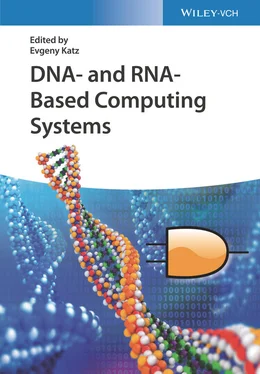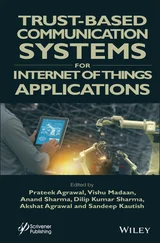178 178
179 179
180 180
181 181
182 182
183 183
184 185
185 186
186 187
187 188
188 189
189 190
190 191
191 192
192 193
193 194
194 195
195 196
196 197
197 198
198 199
199 200
200 201
201 202
202 203
203 204
204 205
205 206
206 207
207 208
208 209
209 210
210 211
211 212
212 213
213 214
214 215
215 216
216 217
217 218
218 219
219 220
220 221
221 222
222 223
223 224
224 225
225 226
226 227
227 228
228 229
229 230
230 231
231 232
232 233
233 235
234 236
235 237
236 238
237 239
238 240
239 241
240 242
241 243
242 244
243 245
244 246
245 247
246 248
247 249
248 250
249 251
250 252
251 253
252 254
253 255
254 256
255 257
256 258
257 259
258 260
259 261
260 262
261 263
262 264
263 265
264 266
265 267
266 268
267 269
268 270
269 271
270 272
271 273
272 274
273 275
274 276
275 277
276 278
277 279
278 280
279 281
280 282
281 283
282 284
283 285
284 286
285 287
286 288
287 289
288 290
289 291
290 292
291 293
292 294
293 295
294 296
295 297
296 298
297 299
298 300
299 301
300 302
301 303
302 304
303 305
304 306
305 307
306 308
307 309
308 310
309 311
310 312
311 313
312 314
313 315
314 316
315 317
316 318
317 319
318 320
319 321
320 322
321 323
322 324
323 325
324 326
325 327
326 328
327 329
328 330
329 331
330 332
331 333
332 334
333 335
334 336
335 337
336 338
337 339
338 340
339 341
340 342
341 343
342 345
343 346
344 347
345 348
346 349
347 350
348 351
349 352
350 353
351 354
352 355
353 356
354 357
355 358
356 359
357 360
358 361
359 362
360 363
361 364
362 365
363 366
364 367
365 368
366 369
367 370
368 371
369 372
370 373
371 374
372 375
373 376
374 377
375 379
376 380
377 381
378 383
379 384
380 385
381 386
382 387
383 388
384 389
385 390
386 391
387 392
388 a1
DNA- and RNA-Based Computing Systems
Edited by
Evgeny Katz

Editor
Dr. Evgeny Katz
Clarkson University
Department of Chemistry
Clarkson Avenue 8
NY
United States
All books published by Wiley‐VCHare carefully produced. Nevertheless, authors, editors, and publisher do not warrant the information contained in these books, including this book, to be free of errors. Readers are advised to keep in mind that statements, data, illustrations, procedural details or other items may inadvertently be inaccurate.
Library of Congress Card No.:
applied for
British Library Cataloguing‐in‐Publication Data
A catalogue record for this book is available from the British Library.
Bibliographic information published by the Deutsche Nationalbibliothek
The Deutsche Nationalbibliothek lists this publication in the Deutsche Nationalbibliografie; detailed bibliographic data are available on the Internet at < http://dnb.d-nb.de>.
© 2021 WILEY‐VCH GmbH, Boschstr. 12, 69469 Weinheim, Germany
All rights reserved (including those of translation into other languages). No part of this book may be reproduced in any form – by photoprinting, microfilm, or any other means – nor transmitted or translated into a machine language without written permission from the publishers. Registered names, trademarks, etc. used in this book, even when not specifically marked as such, are not to be considered unprotected by law.
Print ISBN:978‐3‐527‐34720‐9
ePDF ISBN:978‐3‐527‐82540‐0
ePub ISBN:978‐3‐527‐82541‐7
oBook ISBN:978‐3‐527‐82542‐4
Cover DesignAdam‐Design, Weinheim, Germany
The use of biomolecular systems for processing information, performing logic operations, computational operations, and even automata performance is a rapidly developing research area. The entire field was named with the general buzzwords, “biomolecular computing” or “biocomputing.” Exciting advances in the area include the use of various biomolecular systems including proteins/enzymes, DNA, RNA, DNAzymes, antigens/antibodies, and even whole biological (usually microbial) cells operating as “hardware” for unconventional computing. The present book concentrates on DNA and RNA molecules utilized for information processing (biocomputing). Extensive ongoing research in the DNA‐ and RNA‐based biocomputing has been motivated by speeding up computation, at least for solving some special problems, due to massive parallel operation of numerous biomolecules. The advantages of the DNA and RNA computing systems are also in their ability to operate in a biological environment for solving biomedical problems in terms of diagnostics and possibly therapeutic action, operating as nanorobots in living organisms. DNA molecules are also applicable as memory material with extremely high data density storage.
The present book summarizes research efforts of many groups in different universities and countries. The book reviews and exemplifies these developments, as well as offering an outlook for possible future research foci. The various topics covered highlight key aspects and the future perspectives of the DNA‐ and RNA‐based computing. The different topics addressed in this book will be of high interest to the interdisciplinary community active in the area of unconventional biocomputing. The readers can find additional complementary material on molecular [1], biomolecular [2], and enzyme‐based [3] computing published recently by Wiley‐VCH (see book cover pages below). It is hoped that the present book will be important and beneficial for researchers and students working in various areas related to biochemical computing, including biochemistry, materials science, computer science, and so on. Furthermore, the book is aimed to attract young scientists and introduce them to the field while providing newcomers with an enormous collection of literature references. I, indeed, hope that the book will spark the imagination of scientists to further develop the topic.
I would like to conclude this preface by thanking my wife Nina for her support in every respect in the past 49 years. Without her help it would not have been possible to complete this work. Also, cooperation and hard work of all authors working together with me on this edited volume are highly appreciated.
Potsdam, NY, USA
January 2020
Evgeny Katz
Читать дальше













